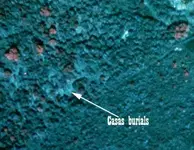RDT---
Last first. If you play a musical note, and put a tuning fork which is resonant at a harmonic or subharmonic of that note, that tuning fork will vibrate from the sound. Even though the note is
pure, that is, the instrument is
not emitting harmonics or subharmonics.
So, in that case, it would be the
tuning fork which is creating it's own vibration frequency, continually stimulated by the note from the instrument, at
exactly double or half the resonant frequency of the tuning fork.
So, there you have a harmonic or subharmonic, but
where did it come from? It didn't come from the instrument. The tuning fork didn't generate it on it's own, because it has no energy.
The harmonic or subharmonic occurred because the musical note from the instrument stimulated the tuning fork (via air movement), and being resonant at exactly double or half the frequency of the note, and since the tuning fork is a
mechanical tuned circuit, it vibrates at it's resonant frequency because the timing of the instrument's note is continually stimulating it at exactly the right times, due to the exact multiple or division of it's frequency, and the tuning fork will continue to vibrate as long as the instrument's note continues.
The RF interference from Amplitude Modulated transmitters occurs in two ways.
One way is when the output is clipped, from overmodulation. This results in output that resembles square waves, because the RF amplifier is overdriven and cannot amplify enough to match the excess amplitude of the audio input. The more overmodulation, the more the result resembles square waves. Square waves are composed of odd-numbered harmonics, and these harmonics cause radiation outside of the expected bandwidth of the transmitter. This results in bleedover into nearby channels. This would be a "dirty" transmitter. (Pure sine waves do not contain harmonics.)
See:
http://en.wikipedia.org/wiki/Square_wave
The other way is, too wide of an audio bandwidth used in modulation. This is why AM radio stations don't have very high fidelity. They must limit their audio range in order to avoid large sidebands which extend beyond their authorized transmitted RF bandwidth. These sidebands are created by
your old friend, the frequency mixing results! This, of course, would also cause bleedover.
So, frequency mixing does not cause harmonics.
Just because something, whose resonant frequency is a harmonic of an introduced frequency, resonates at that harmonic, doesn't mean that the introduced frequency, itself,
contains a harmonic.
Side notes: Sine waves occur in nature, while square waves must be man-made. Sparks can contain an infinite number of frequencies, and that's why things like motors with commutators, switches being turned on or off, and lightning, can be heard on radios and TVs.







 We have consistently posted that it is the 'differential' - loss - of this "heat" from the stored thermal masses that creates a window for a modified camera to work as we are discussing.
We have consistently posted that it is the 'differential' - loss - of this "heat" from the stored thermal masses that creates a window for a modified camera to work as we are discussing. 

